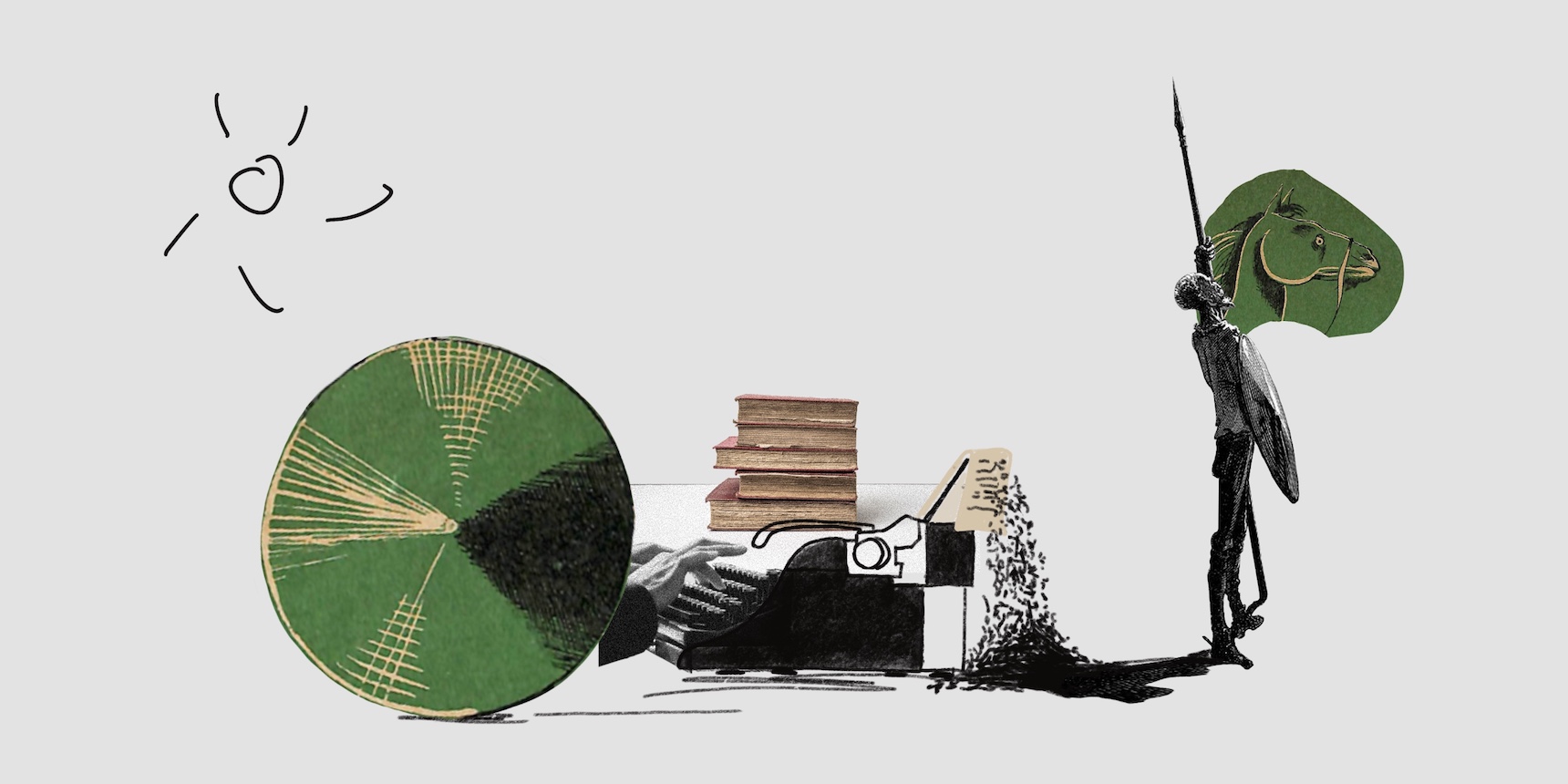
A cornerstone of the modern novel in world literature, Cervantes’ “Don Quixote” remains largely unread in Armenia, with the Armenian translation of this two volume novel never having fully made its way to Armenian readers. Instead, an abridged version of the novel became more popular in print and consumption. However, this version not only fails to convey the essence and charm of “Don Quixote” but also diminishes and distorts the novel’s essential presence in Armenian cultural life.
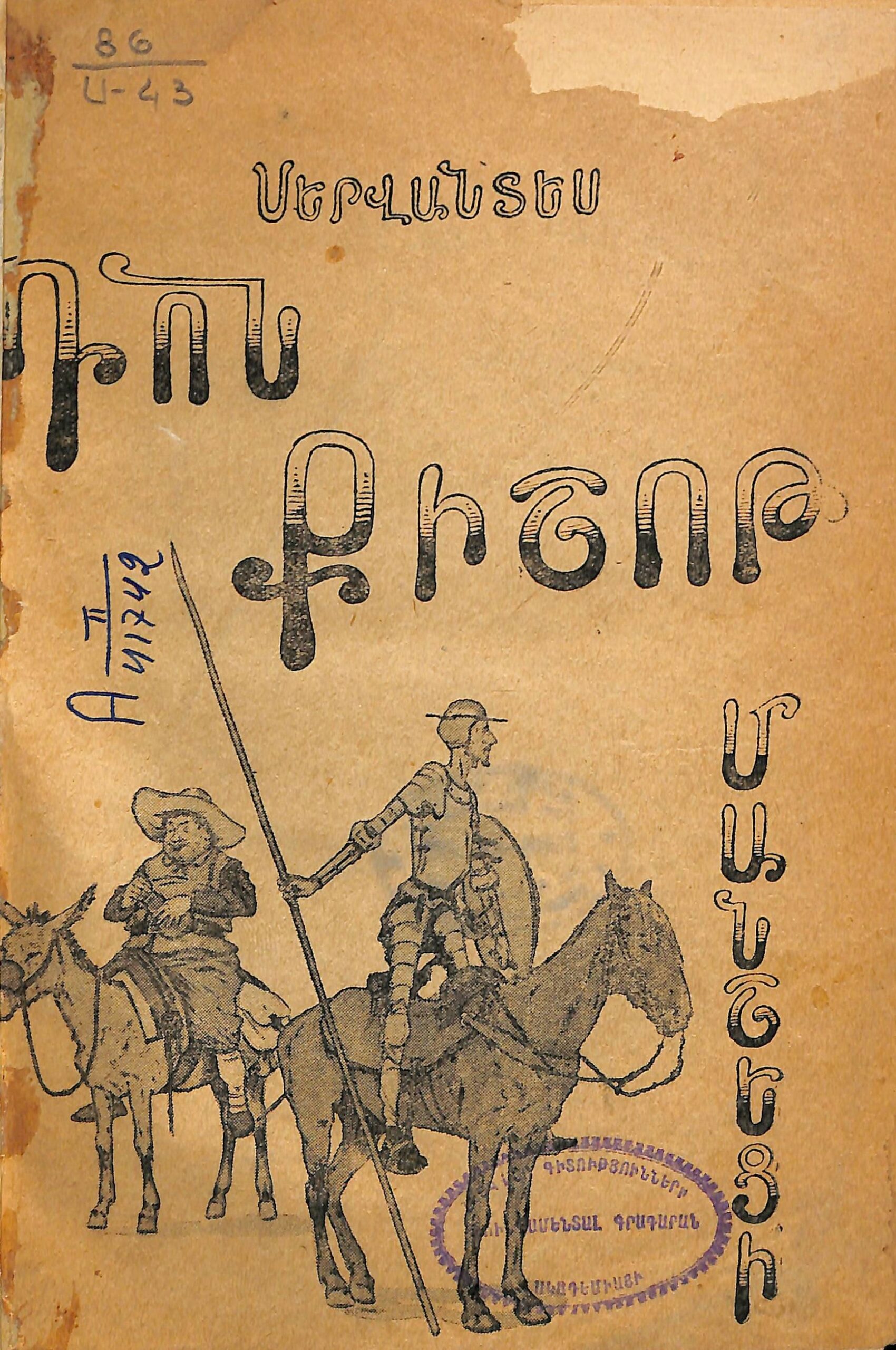
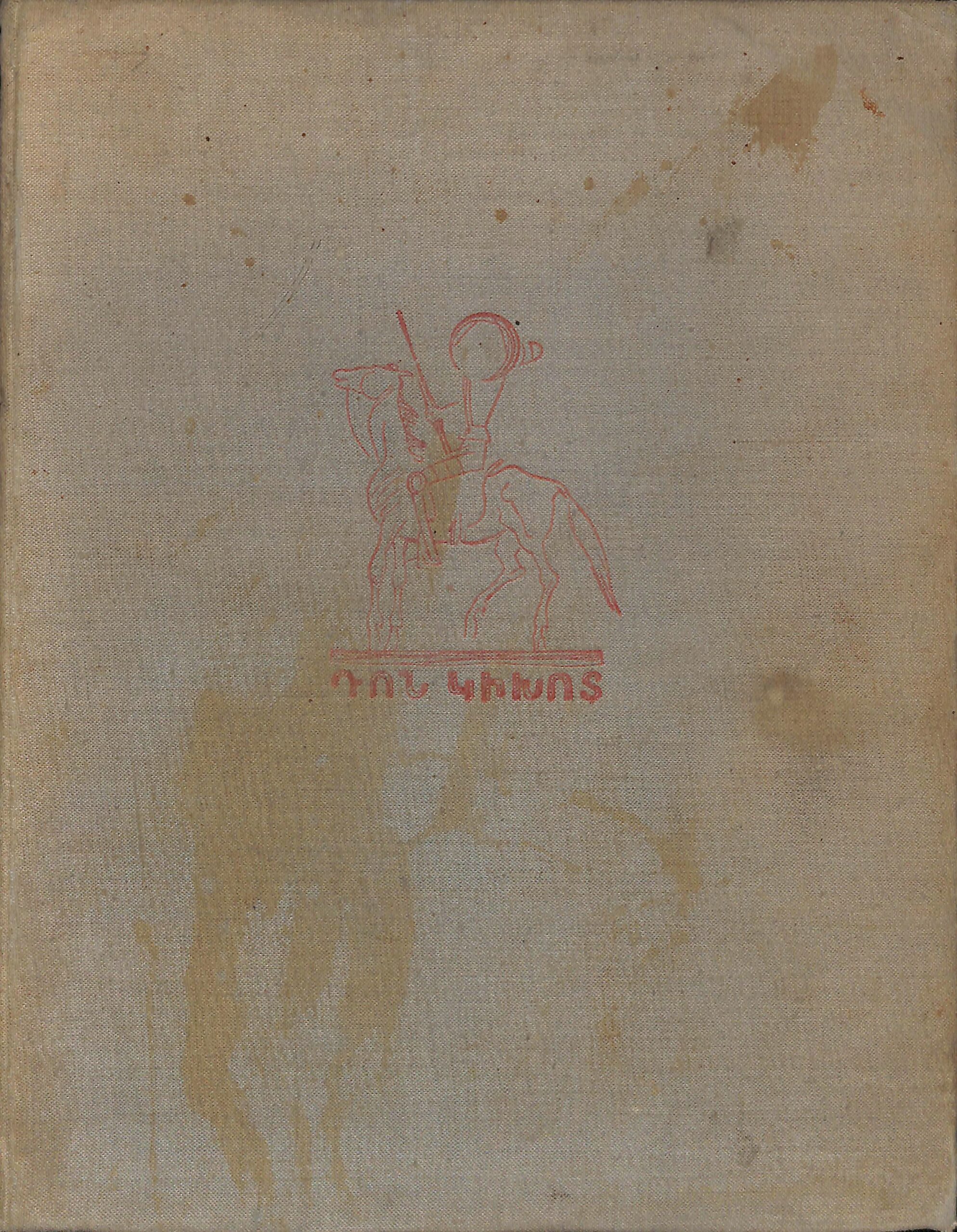
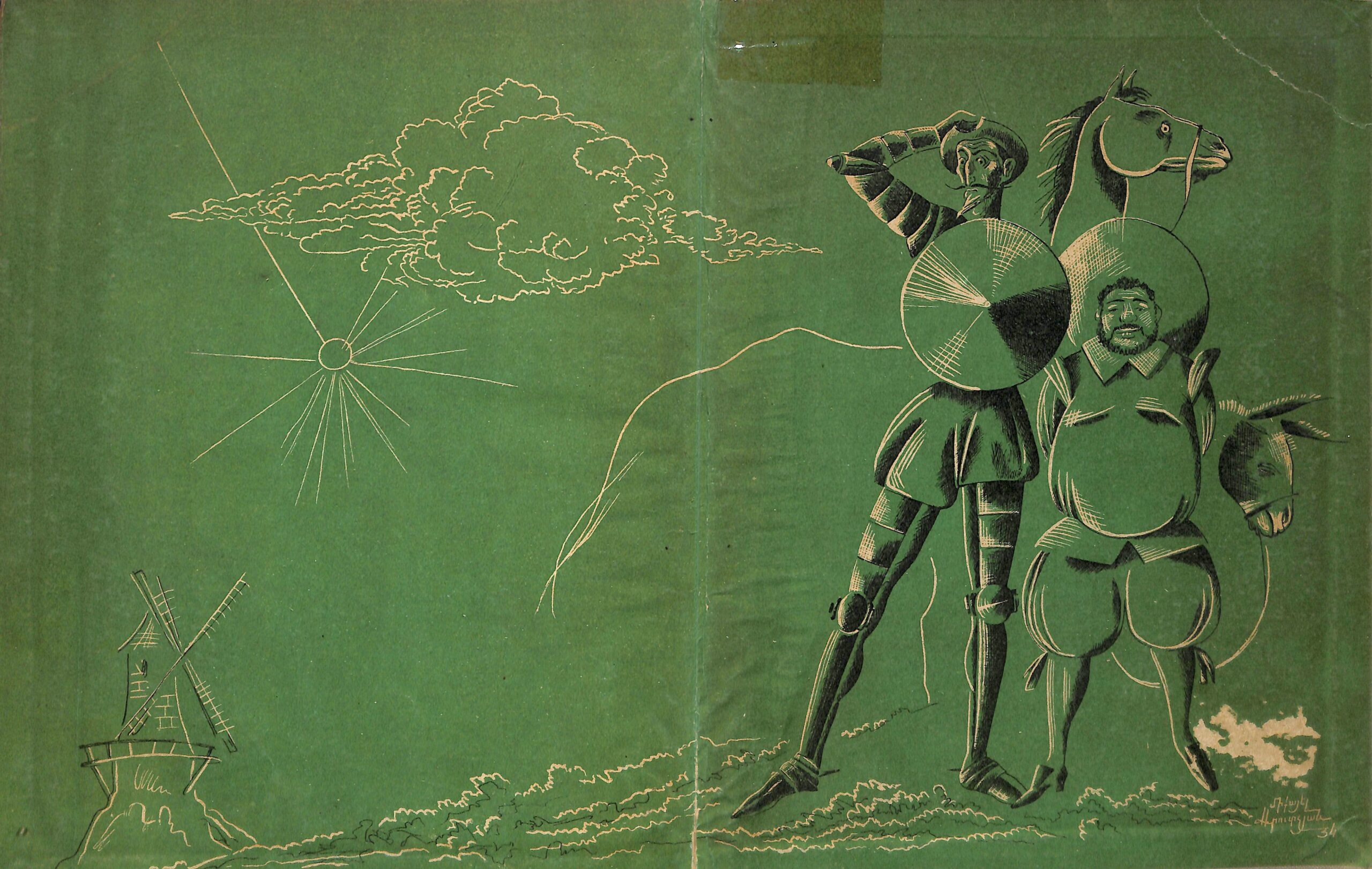
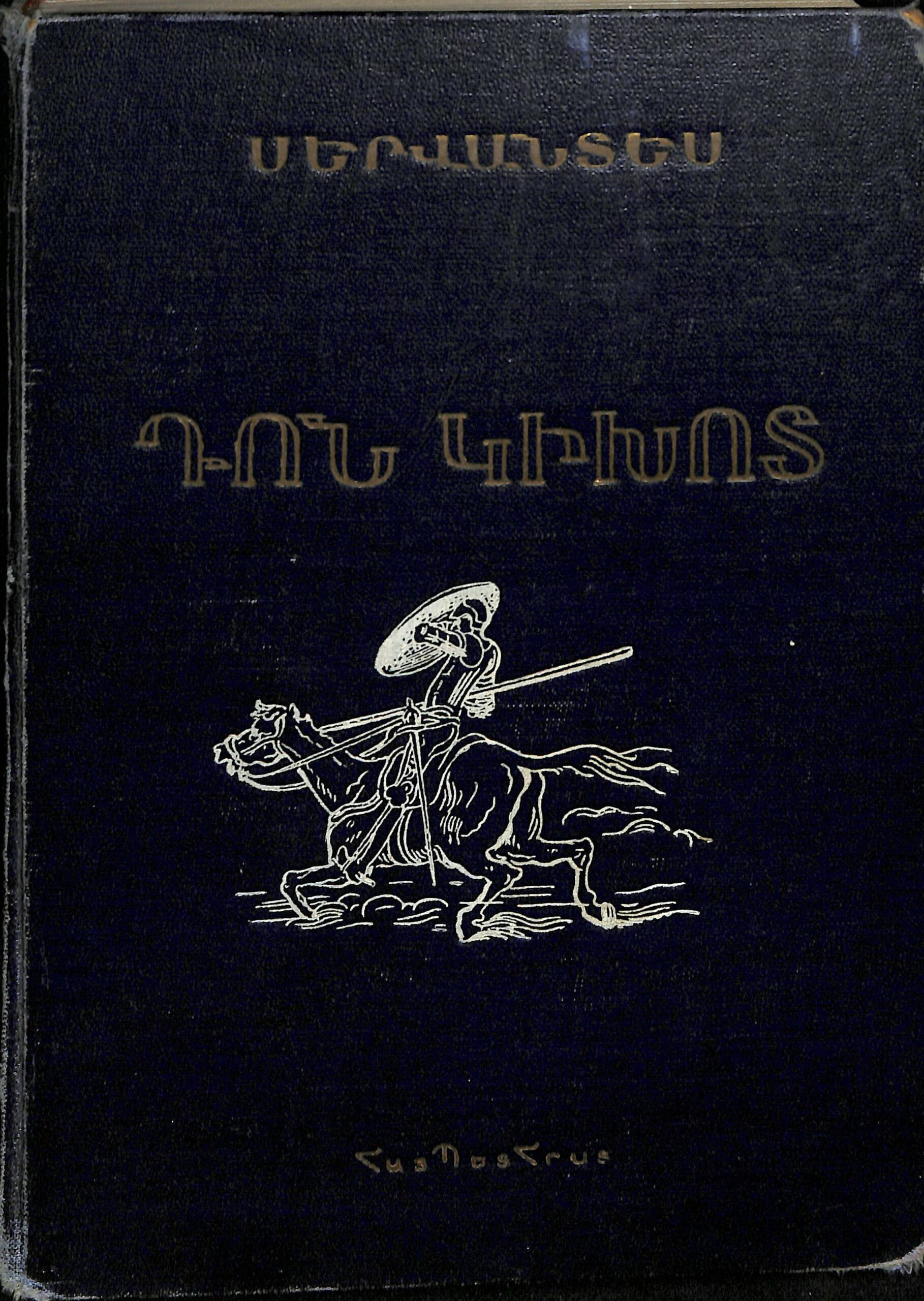
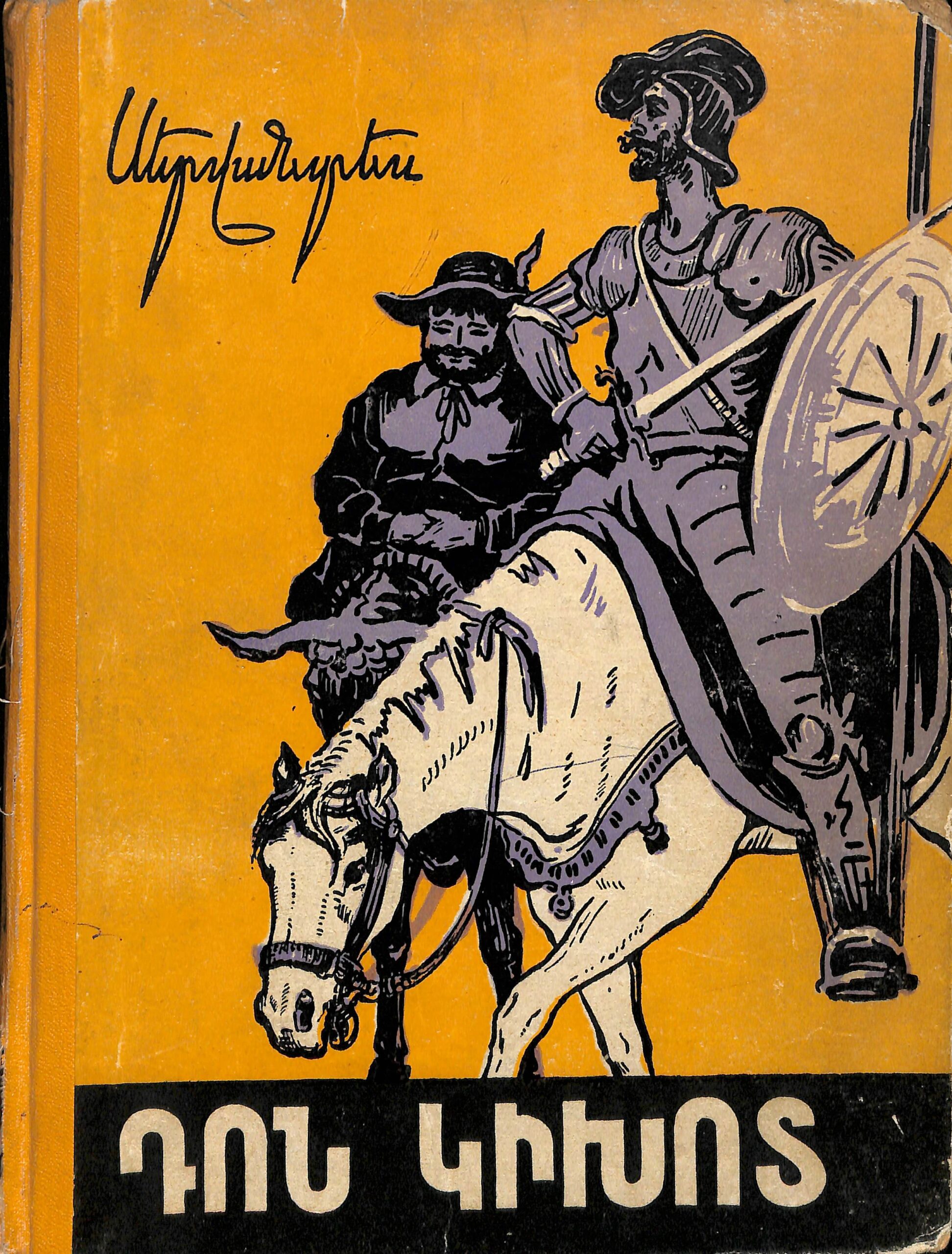
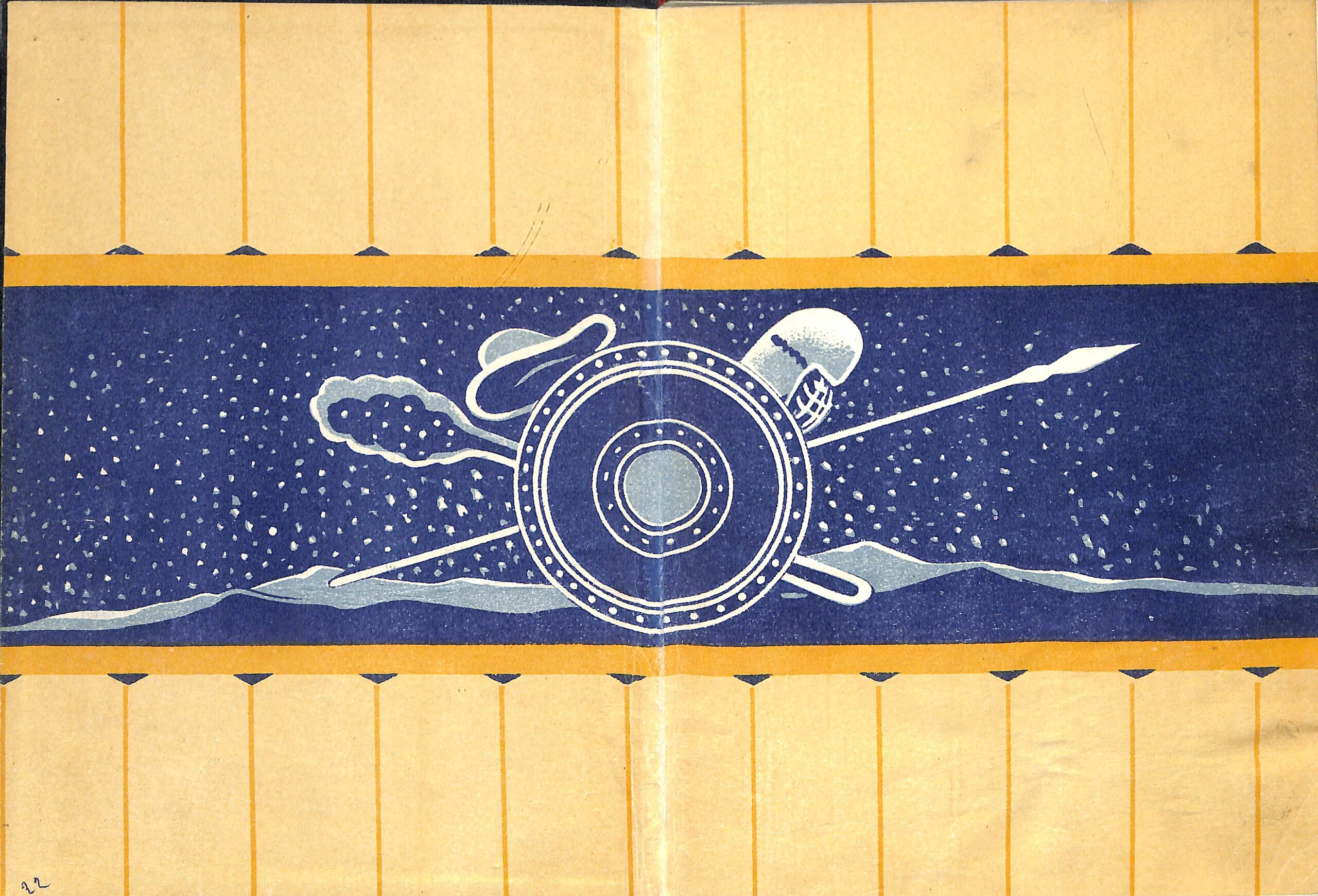
Listen to the audio article in Armenian narrated by the author.
Ձայնագիր. «Դոն Կիխոտը» հայերեն՝ ներկա-բացակա
Համաշխարհային գրականության անկյունաքարերից՝ Սերվանտեսի «Դոն Կիխոտ» վեպի հայերեն թարգմանության խնդիրը քննող անդրադարձի ՁայնաԳիրը։
Read moreVahan Sargsyan’s “Don Quixote”
In 2010, the Asoghik publishing house released the first complete Armenian translation of “Don Quixote”, based on the original Spanish text and published in two volumes. The translator, Vahan Sargsyan (1954-2011), a Basque scholar, linguist, and honorary member of the Royal Academy of the Basque Language, annotated the novel and wrote its foreword. Sargsyan was a prolific author of numerous publications, translations and dictionaries. He served as the editor of the Armenian-Basque scientific and cultural journal “Araxes”. In 2005, Sargsyan’s diligent work resulted in the publication of Cervantes’ “Exemplary Novels”, a series of 12 novellas, as well as “Pages from the History of Armenian Cervantes Studies”.
The collection comprises over two dozen publications arranged chronologically, including forewords, introductions, articles, and debate essays. They analyze the Armenian translations of “Don Quixote”, and describe impressions of the novel in Armenian translation and the art of writing. The collection begins with a foreword by Vahan Sargsyan entitled “Two Words”, in which the translator briefly presents the journey of the Armenian translation of “Don Quixote”. He writes:
“According to the information we have, ‘Don Quixote’ has been translated into Armenian eight times, only one of which is complete and translated from Russian. It should be noted that the Armenian translations of ‘Don Quixote’ were made from different languages and were published in different cities: Istanbul, Tbilisi, Yerevan, Egypt and Beirut. The first translation, published in 1868, was in Turkish with Armenian letters. The translator is Hovhannes Teroients, who attached an extensive preface to his translation. The first Armenian translation of ‘Don Quixote’ was published in Istanbul in 1874. Unfortunately, we were unable to find information about this exceptionally important publication. According to information published in the press, the translation was made by a student of the Sahakyan College in Istanbul. [1]
Vahan Sargsyan makes an important remark at the end of his enlightening foreword regarding Armenian studies of Cervantes: “The vast Armenian-language press has yet to be thoroughly studied; there are many materials that have yet to be discovered, about which only references have been preserved.” [2]
Vahan Sargsyan accomplished a very valuable feat, something many had wanted to see: He translated the complete “Don Quixote” from the original text, four hundred years after the novel was first published by Cervantes. In the preface of the book “Pages from the History of Armenian Cervantes Studies” Sargsyan notes that the Armenian translation of “Don Quixote” published by Haypethrat in 1950-51 and most likely translated from Russian, went unnoticed.[3] In fact, it was deliberately concealed from the discourse to avoid drawing unnecessary attention to the translation. Unfortunately, Sargsyan’s translation of the original text has largely remained out of reach for readers due to a small print run, publishing issues, or copyright constraints, making it present, yet absent among us.
Poghos (Paolo) Makintsyan: The Armor-Bearer of “Don Quixote”
In 1934, Haypethrat released an abridged translation of “Don Quixote”. The novel was translated from Russian by Poghos Makintsyan, with some references to the original text. The title page credits “artist M. Arutchay for the dust jacket, endpaper, title pages and pictures, and technical editor T. Khachvankyan, and proofreader Vahram Manukyan.” [4]
This beautiful edition opens with an extensive foreword by Poghos Makintsyan titled “Cervantes and Don Quixote”. In it, he presents notable episodes from Cervantes’ life and creative work, discusses the historical and cultural definitions given to the novel in different eras, and explores the varied interpretations of writers and philosophers.
The 1934 abridged edition of “Don Quixote” is only 192 pages long and concludes with a brief and important epilogue. In this epilogue, titled “From the Translator”, Makintsyan reveals the linguistic and epistemological challenges he faced when translating “Don Quixote”, the obstacles he overcame, and how he reconciled, bridged, and brought together the different ways of thinking between the languages.
The epilogue concludes with an invitation for feedback, discussion and debate: “At this time, when our press and literary society discuss the problems of literary language and writing, it seems that the art of translation should not be overlooked. Therefore, by publishing the abridged translation of ‘Don Quixote’, we would first like to listen to the opinion of our critics and readers, before submitting the complete Armenian translation of Cervantes’ brilliant novel for publishing.”[5]
Who was Poghos Makintsyan (1884-1938)? His fast-paced, turbulent life, fitting for the difficulties and contradictions of the revolutionary environment of his time, deserves an epic story. Makintsyan was one of the well-known figures of Marxist literary criticism and a close friend of Vahan Teryan, Alexander Myasnikyan, and Tsolak Khanzadyan. He brought a new perspective to the works of Tumanyan, Isahakyan, Teryan and others. Together with Teryan, he founded the Pantheon Publishing House in Moscow. He also helped Maxim Gorky compile the anthology “The Collection of Armenian Literature” and wrote the article “An Overview of Armenian Literature” for it. After the Sovietization of Armenia, he joined the People’s Committee and in the 1920s served as the Commissar of Internal Affairs and Enlightenment. He also carried out diplomatic missions in Istanbul and Italy. Unfortunately, Poghos Makintsyan became a victim of Stalin’s repressions.
Makintsyan’s collection of articles entitled “Visage” was published in 1980 by the Soviet publishing house “Sovetakan Grogh”. The foreword was written by Edward Jrbashyan. To quote a passage from the book: “In his final years, P. Makintsyan devoted a lot of energy and time to artistic translations. During this period, he translated Pushkin’s tragedy ‘Boris Godunov’, Dostoevsky’s novel ‘The Gambler’, an abridged version of Cervantes’ novel ‘Don Quixote’ and the first volume of its complete version.”[6] The fate of Makintsyan’s translation remains shrouded in mystery. An abridged version of “Don Quixote” was published in 1934, and, according to various assertions, he continued to work on the full version but was arrested in 1936.
Years later, the first volume of the novel “The Ingenious Hidalgo Don Quixote De La Mancha” was published by Haypethrat in 1950, with illustrations by Gustave Dore, followed by the second volume in 1951. Interestingly, the author of the translation is only revealed on the last page of the second volume: “Translated from Russian by A. M. Ghazaryan.”
Eleven years later, in 1962, a reprint of “Don Quixote” (Haypethrat) from 1934 appeared in bookstores, with the title page reading: “Translation by P. Makintsyan.” The spelling was changed, Makintsyan’s foreword and epilogue were left out of the book, and the print run was 20,000.
In 1982, “Don Quixote” was republished by “Sovetakan Grogh” in almost the same style as before, this time with a circulation of 30,000. The title page attributes the translation to P. Makintsyan, with the following annotation: “This abridged retelling of the famous novel ‘Don Quixote’ written by prominent literary figure of the Renaissance, genius Spanish writer Miguel de Saavedra (1547-1616), is being republished for the young.”[7]
Many readers are familiar with “Don Quixote” through these two popular, abridged editions published in 1962 and 1982. However, these editions mistakenly lead readers to believe that they are reading Cervantes’ complete novel, when in fact they are only getting part of the story. As a result, the full and collective message of the novel is not accurately portrayed.
In 2005 and 2006, the Nairi publishing house republished the complete two-volume “Don Quixote,” which was originally published in 1950-51. The re-publication included an editorial by Gurgen Gasparyan entitled “On the Occasion of the Publication”. This editorial sheds light on a number of unclear questions, including controversial viewpoints on the true author of the translation. Gurgen Gasparyan thoroughly addresses these viewpoints and demonstrates and compares the Armenian translation of “Don Quixote” from 1934 and 1950-51. He proves that Poghos Makintsyan is not only the author of the abridged translation, but also of the complete two-volume work published in 1950-51.
For those interested in this serious and, of course, rapturous material, Gurgen Gasparyan’s foreword is a must-read. Bringing together essential materials, he combines facts, makes observations, and provides evidence that, for some reason, intentionally or purposefully, the name of the real translator of the novel, Poghos Makintsyan, was not mentioned under the translation of “Don Quixote” in 1950-51. Moreover, the translation of Makintsyan was attributed to journalist and translator Ashik (Arshavir) Ghazaryan (1904-1962).
Unfortunately, the two-volume, complete “Don Quixote” is not readily available to readers today. Due to mass print runs in the past, abridged lithographic editions of the novel are more common in family libraries and among antique dealers. However, we can hope that the day is not far off when this gap will be filled, and the complete Armenian “Don Quixote” will return to readers in a dignified manner with a sufficient number of copies, and taking its rightful place as an important translation of a major work of world literature.
Footnotes:


